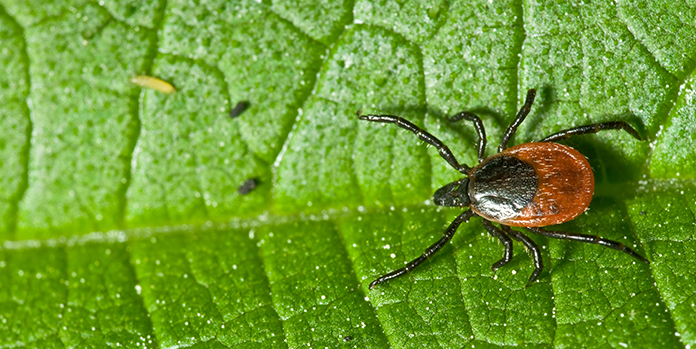How to Stay Active if You Have Lyme Disease

Learning how to stay active with Lyme disease can often be frustrating and confusing. Lyme Disease is a chronic and debilitating illness. The appropriate activity stimulates muscle and nerve regeneration but also to moves bacteria trapped in the brain and heart into the bloodstream where it can be destroyed by the immune system. However, doing too much can leave you feeling more fatigued and discouraged.
As Kinesiologists we provide exercise therapy programs for clients with various kinds of illnesses and medical conditions. Lyme Disease is one condition that we are seeing a growing number of people seek us for help. The main goal of an exercise therapy program for Chronic Lyme Disease is to improve daily energy levels so that someone can continue to work or simply do daily activities like cooking, cleaning, self-care and shopping.
The number of Lyme disease cases in Canada has been on the risen from 144 in 2009 to 841 in 2016.
What is Lyme Disease?
There has been much research into Lyme Disease and the best form of treatment. It is vital to keep active with any chronic illness, however many individuals with Lyme Disease are unsure of how to stay active or exercise without aggravating their symptoms.
3 Stage of Lyme Disease
- Early Localised Disease – After a person has come into contact with a tick and has been bitten the area around the bite develops an expanding red ring; however 1 in 4 people never develop a rash. One will also experience fatigue, muscle & joint soreness, swollen glands and headaches.
- Early Disseminated Disease – The bacterium and its affects can spread throughout the body causing disease in the joints, heart & CNS. If one has developed a rash it will most likely subside in 4 to 6 weeks unlike the other effects of the disease.
- Late Disease – At this stage the effects of the disease will have caused inflammation in the cardiac muscle, causing abnormal rhythm. The CNS can develop facial paralysis and disease of the peripheral nerves leading to impairments in balance and co-ordination. One might also experience headaches and confusion. Other symptoms include arthritis and inflammation of the joints causing stiffness and pain.
What are Exercise Guidelines for Lyme Disease?
How to Treat Lyme Disease
Ask your doctor for diagnostic testing for lyme disease if you suspect you are infected. Most Lyme Disease can be cured with a course of antibiotics. The type of antibiotic and its effectiveness depends on the stage of the disease. The earlier the disease is diagnosed the greater the chance of a full recovery. Unfortunately, for some individuals the antibiotics are ineffective and the disease continues to persist despite the antibiotic intervention. An alternative is moderate physical activity which is encouraged for people with Lyme Disease.
What Type of Exercise is for Lyme Disease Recovery?
Exercise is vital to stimulate muscle and nerve regeneration but also to move bacteria trapped in the brain and heart into the blood stream where it can be destroyed by the immune system. Exercise will also increase body temperature and blood oxygen levels, creating an inhospitable environment for the bacteria. Furthermore, exercise will drive the antibiotics deeper into the muscle tissues.
While exercising with Lyme Disease it is important to be aware of how much the central nervous system is fatigued during each training session which is impacted by how much energy you have expended during the days before. Although the main goal is to increase energy, too much, too soon can negatively impact the your ability to recover and function throughout the rest of the day and the following day.
Since, moderate to intense cardiovascular conditioning in not recommended because it can depress the immune system and cause undue fatigue we are left with resistance training to improve muscular stamina.
Does Weight Training Help Those with Lyme Disease?
es, strength training (resistance training) is beneficial for people with Lyme Disease. We start by focusing on gentle body weight exercises to increase joint, spinal stability which added greater core and hip strength so that activities like walking and climbing stairs were less fatiguing while balance also improved.
Gradually progressed to using exercise tubing, cables and free weights in more dynamic movements such as presses, rows, deadlifts, and steps ups. The intensity was kept at an individualized light to moderate level so that each activity was enough to stimulate health gains, but not produce too much fatigue.
Another way to reduce fatigue is with self-myofascial release, an individualized gentle self-stretching program and Fascial Stretch Therapy to gradually improve joint range of motion and calm the nervous system.
An important part of our programs is client education. This includes teaching self-pacing strategies as well as proper movement patterns before loading (adding greater levels of difficulty and resistance).
Please contact us at if you know of someone who is affected by chronic fatigue or Lyme Disease and is unsure of how to exercise appropriately.






